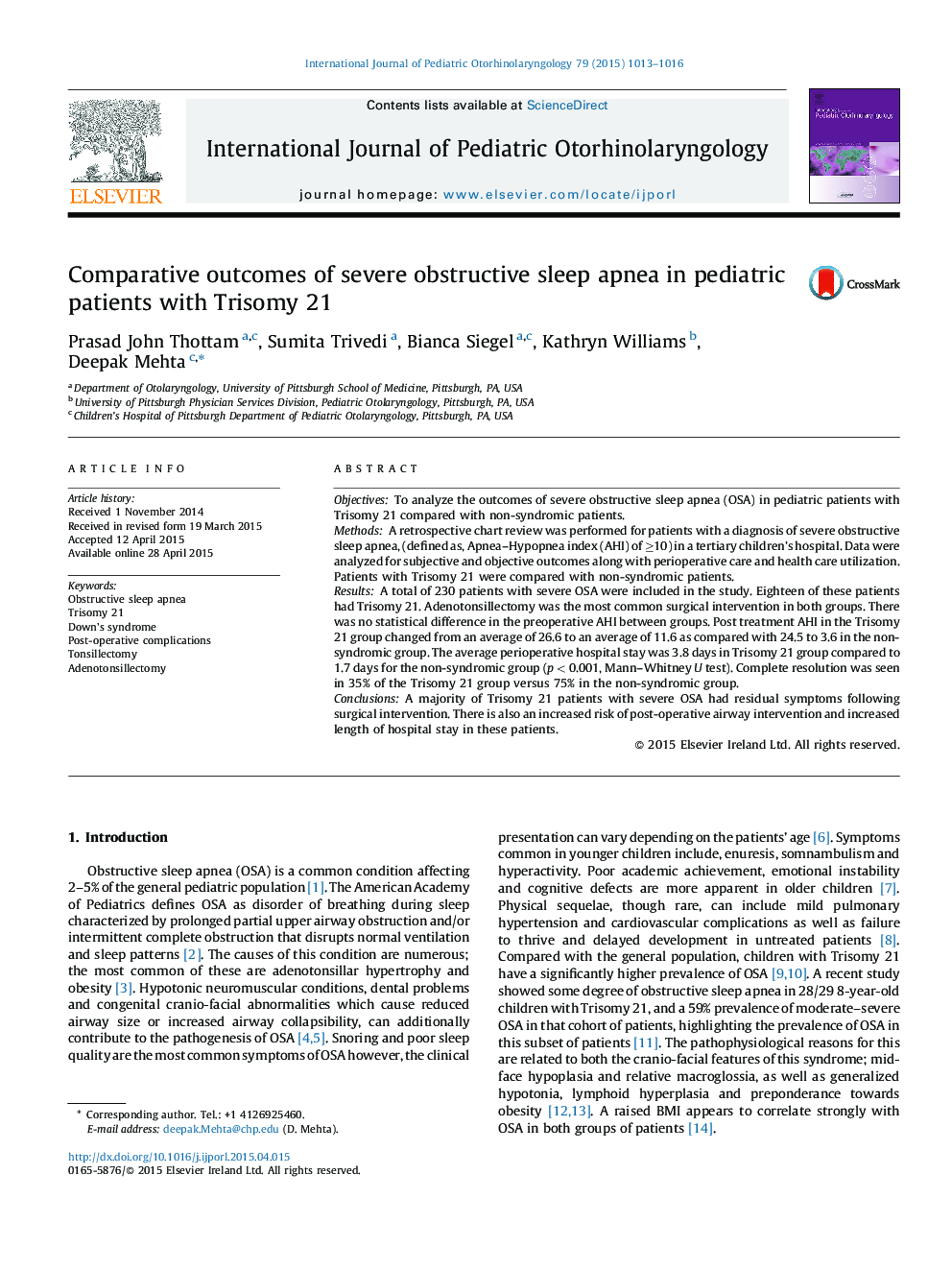| Article ID | Journal | Published Year | Pages | File Type |
|---|---|---|---|---|
| 4112177 | International Journal of Pediatric Otorhinolaryngology | 2015 | 4 Pages |
ObjectivesTo analyze the outcomes of severe obstructive sleep apnea (OSA) in pediatric patients with Trisomy 21 compared with non-syndromic patients.MethodsA retrospective chart review was performed for patients with a diagnosis of severe obstructive sleep apnea, (defined as, Apnea–Hypopnea index (AHI) of ≥10) in a tertiary children's hospital. Data were analyzed for subjective and objective outcomes along with perioperative care and health care utilization. Patients with Trisomy 21 were compared with non-syndromic patients.ResultsA total of 230 patients with severe OSA were included in the study. Eighteen of these patients had Trisomy 21. Adenotonsillectomy was the most common surgical intervention in both groups. There was no statistical difference in the preoperative AHI between groups. Post treatment AHI in the Trisomy 21 group changed from an average of 26.6 to an average of 11.6 as compared with 24.5 to 3.6 in the non-syndromic group. The average perioperative hospital stay was 3.8 days in Trisomy 21 group compared to 1.7 days for the non-syndromic group (p < 0.001, Mann–Whitney U test). Complete resolution was seen in 35% of the Trisomy 21 group versus 75% in the non-syndromic group.ConclusionsA majority of Trisomy 21 patients with severe OSA had residual symptoms following surgical intervention. There is also an increased risk of post-operative airway intervention and increased length of hospital stay in these patients.
